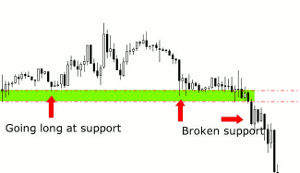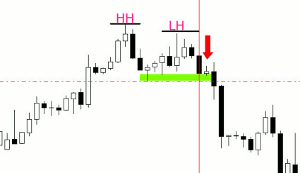While adages are good at conveying important wisdom, sometimes you need a little bit more detail in order to follow the good advice contained within, writes CoachShane of NetPicks.com.
One thing I love in trading are the vague quotes that almost every trader says. One of my top picks is “Cut your losses short and let your profits run.” Makes sense right? When you are on the losing end of a trade, get out of it. When you are correct in the direction, let it run to rack up the profits. As a side note, many swing traders and positional traders make most of their yearly trade results from one-three great runs. Interesting to note!
But…..the problem is that quote is vague.
Cut my losses when? Let it run to where?
I hope this post will give you a some ideas on how you can handle these two very important components of success.
Cut Your Losses
Simply enough is to say get out of the trade when your initial reason for entering the trade is no longer valid or what you are expecting to happen, does not.
Looking at this chart, we can see a level has been support a few times and now we decide to take a long at the next test. (Illustration purpose only disregarding higher time frame location)
REASON FOR ENTRY: Test of support
TRADE INVALID: Break of support
Now, most traders would place their stop just below the support level.
Problem is…..most traders would place their stop just below the support level.
Many times price will splash through support, take out stops, and then continue in your intended direction. The bigger players know the textbook way of trading, know where bundles of stops are located and will drive through to get a better price on their long entry. Now, that does not happen in this case as the move lower continues, but it is good to keep that in mind.
Back to the topic…
So you go long at the second up arrow and you do get some play in your trade. Price then comes to the bottom of the support level. HEADS UP. You want a long move so you need a higher low, but you don’t get it. Price then pokes up to a high clearing out that range (and orders sitting above it) just before it comes back to the bottom of the level. You are in a loss AND price is showing you that the up move is in trouble.
REASON FOR EXIT: Expectations of up move are diminishing.
Once that spike occurs that clears the range before the capitulation down, cutting your losses should be echoing in your head.
WARNING: If your setup is on a higher time frame, drop down to a lower one to see the price action!
The first chart is a 30-minute chart.
Here is the same move on a 4 hour:
The four-hour makes it a little difficult to see the price action. The red line is the entry candle and the red arrow is the first indication that the up move is in trouble.
Cutting your losses is much easier if you can understand price action. There are many clues on the first chart telling you that your long position may not be working. Is there a need to cut your loss at a further level when price has told you a story? No.
Taking a signal on a higher time frame and entering on a lower one allows you a few things:
Better price as you watch price form.
A faster exit as price tells you if you are correct or not.
For me, trading is all about risk. The faster I can get out of a trade that is not working, the better. Be cautious of your stop placement but above all, listen to what the price action is saying. It will allow you to follow the quote of cut your losses short objectively and perhaps save your account from ruin.
I will cover letting trading profits run in a follow-up post.
By CoachShane, Contributor, NetPicks.com























